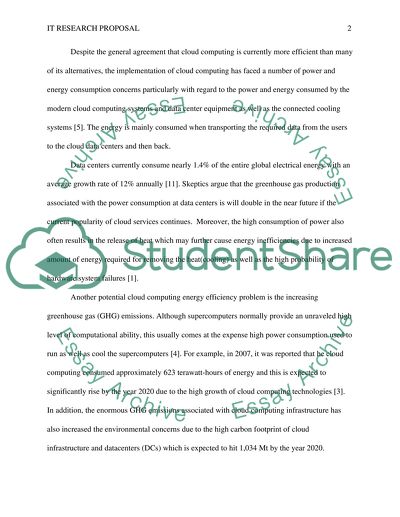Cloud Computing Energy Efficiency Research Proposal - 1. Retrieved from https://studentshare.org/information-technology/1687904-cloud-computing-energy-efficiency
Cloud Computing Energy Efficiency Research Proposal - 1. https://studentshare.org/information-technology/1687904-cloud-computing-energy-efficiency.


